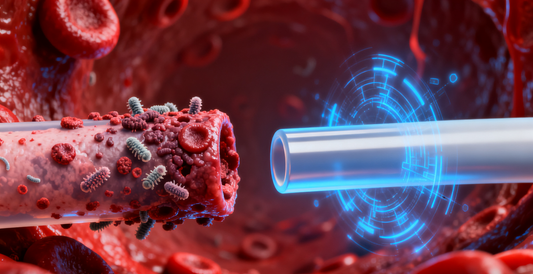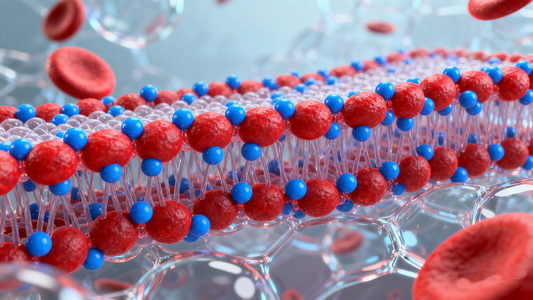
Prolonged Nitric Oxide Release with Stearic Acid Modified CuMOFs: A Breakthrough for Cardiovascular Implants
Introduction: Why Nitric Oxide Matters
Nitric oxide (NO) is a powerful signaling molecule in the human body. It regulates vascular tone, prevents blood clotting, promotes wound healing, and fights bacterial infections. Because of its antithrombotic and antimicrobial properties, NO has been widely studied for use in cardiovascular therapies and medical implants.
However, one of the greatest challenges has been how to deliver NO in a controlled, sustained, and safe way. Traditional carriers release NO too quickly or degrade in moist environments, limiting their clinical use.
This is where metal–organic frameworks (MOFs) come into play.
CuMOFs: A Promising Nitric Oxide Carrier
Copper-based MOFs (CuMOFs) have gained attention due to their:
-
High surface area and porosity for gas storage
-
Amino functionalization, which allows NO to bind and form NONOates (stable NO donors)
-
Potential biomedical applications in coatings for blood-contacting devices
Yet, unmodified CuMOFs suffer from instability in water and phosphate buffer solutions (PBS). This instability leads to rapid NO release and poor long-term performance.
The Breakthrough: Stearic Acid Modified CuMOFs
In the 2022 study published in RSC Advances, researchers developed a novel approach by modifying nano CuMOFs with stearic acid (SA).
-
Hydrophobic Shield: Stearic acid creates a hydrophobic (water-repelling) surface around the CuMOFs.
-
Structural Stability: The modification does not alter the crystal structure of CuMOFs.
-
Controlled NO Release: The hydrophobic barrier slows down the interaction between water and the NO-loaded sites, extending the release period.
Key Findings
-
Extended Nitric Oxide Release
-
Unmodified CuMOFs released NO for ~72 hours.
-
SA-modified CuMOFs (NO@SA3@CuMOFs) released NO continuously for 7 days (168 hours).
-
-
Higher NO Loading Capacity
-
SA-modified CuMOFs stored more NO (1.52 mmol/g) compared to unmodified CuMOFs (1.19 mmol/g).
-
-
Anticoagulant Effect
-
NO@SA3@CuMOFs inhibited platelet activation, reducing clot formation risk.
-
Blood coagulation time was significantly prolonged, showing strong hemocompatibility.
-
-
Antibacterial Performance
-
Against E. coli and S. epidermidis, NO-loaded CuMOFs achieved up to 95–100% antibacterial efficiency.
-
This dual action (anticoagulant + antimicrobial) makes them highly suitable for blood-contacting implants.
-
Potential Applications
This research suggests that stearic acid modified CuMOFs could play a transformative role in:
-
Cardiovascular stents and catheters – preventing thrombosis and infection simultaneously.
-
Wound healing materials – enabling sustained antibacterial and tissue-regeneration support.
-
Next-generation biomaterials – combining nanotechnology, drug delivery, and surface engineering.
Conclusion
The study demonstrates that stearic acid modified CuMOFs represent a robust, stable, and efficient nitric oxide carrier. By solving the challenge of rapid NO release and instability in aqueous environments, this innovation opens the door for long-term use in cardiovascular implants and antimicrobial biomaterials.
As biomedical engineering continues to integrate nanotechnology, breakthroughs like this bring us closer to smarter, safer, and more effective medical devices.
👉 If you’re researching NO delivery systems, biomaterials, or implantable medical devices, stearic acid modified CuMOFs could be the future of sustained nitric oxide therapy.


